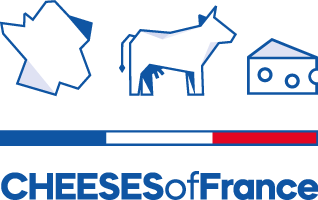Nutritional qualities of cheese
Cheese has always played a key role in French gastronomy. A food to enjoy, cheese is also a healthy product, as a source of many nutrients, vitamins, minerals and trace elements including calcium, which contribute to a balanced diet.
In France there are over 1,200 cheese varieties. This wide diversity means that everyone, regardless of age, tastes and situation, can reap the nutritional benefits of cheese. Particularly rich in calcium, cheese is also abundant in good nutritional quality proteins, vitamins and trace elements.

Nutrients
Most cheeses are characterized by their content of proteins, minerals and trace elements (calcium, zinc, potassium, etc.) and vitamins (vitamin A, B2, B9, B12, D, etc.).
Their nutritional composition depends largely on the milk and technology used, so it is difficult to generalise. Cooked pressed cheese, for example, is particularly high in calcium and phosphorous.
Vitamin B9, or folic acid, is also found in cheese. It helps in the formation of red blood cells and nerve cells. It contributes to the production and processing of proteins. This vitamin is especially found in blue cheeses (Roquefort) or cheeses with a bloomy rind (Camembert, Coulommiers, Brie)
Vitamin A (or retinol) is found in milk fat, cheese, butter and cream. It contributes to healthy vision, particularly at night, as well as to fighting infection and preventing premature ageing. We need it to keep skin in healthy condition.
Energy value
The energy value of cheese essentially depends on their water and fat content. This can vary from 50kcal for a 100g portion of 0% fat fromage blanc to 90kcal for a portion of pressed cheese such as Comté.
Fat
Displaying the fat content in cheese has long misguided consumers. The old regulations are to blame – they stipulated that the fat content had to be indicated in relation to the dry weight, without taking into account the water content in the cheese! As a result, the figures were much higher than the amount of fat actually contained in 100g of cheese. Thus Camembert showed a fat content of 45%, but it was actually just 20%. Since 2007, the legislation has allowed the fat content of the finished product – as it is consumed – to be displayed. The content indicated corresponds to 100g of cheese. A sensible portion of cheese after a meal is considered to be around 30g. Lastly, just 0 to 9g of fat can be found per portion of cheese.
Did you know?
The lactose, carbohydrate or “sugar” naturally contained in milk is partly eliminated and broken down by microorganisms during milk processing. Cheeses and butter contain no or little trace of lactose.
 繁體中文
繁體中文  简体中文
简体中文  한국어
한국어  Français
Français 

